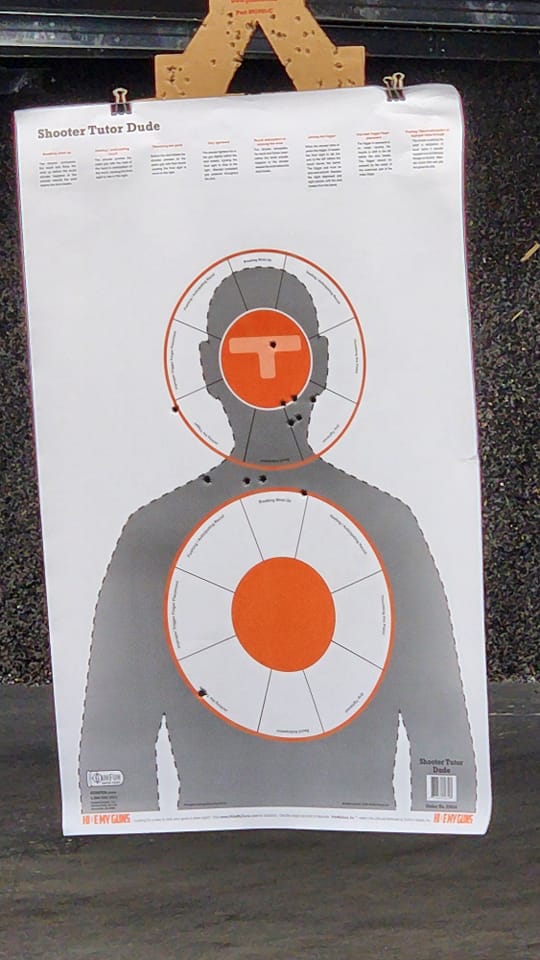I had an Ellifritzian interesting experience at the local gun range the other day.
I’d gone in just to test fire a couple of guns, and on my way out I saw and overheard an exchange in the next bay.
This was their target at 5 yards.

Advertisement — Continue Reading Below
Honestly, I don’t have a problem with the target.
Why? Because from what I overheard, it was very clearly the shooter’s first (or one of their first) times with a handgun. I feel that it’s critical to get new shooters enthusiastic about shooting before we bury them with all the hard work that we insist is necessary to be a competent defensive shooter.
What I had a serious problem with was the feedback that his shooting partner gave:
Advertisement — Continue Reading Below
“Yea, he’s dead! I mean half his face would be missing”

The big issue is that many gun owners/carriers, especially those new to the whole thing, is that most of them approach this with the mentality of “Well I’d sure as hell stop whatever I was doing if I got shot there”.
Advertisement — Continue Reading Below
Problem is I’d be willing to be that 99.9999999999% of them have never been shot before.
When Darryl Bolke talks about his time as a California cop in the bad old days of the 80s, before computers and digital records, many arrestees where cataloged and identified by tattoos and scars, to include bullet wounds.
He observed a staggering number of kids not yet old enough to drink that had been shot more than once.
Advertisement — Continue Reading Below
Think about that for a second. Do you think that a violent criminal actor who has not only been shot before, but survived it to be able to offend again may have a different attitude about it?
This is why we need to normalize anatomically significant hits, and make it part of the conversation outside of the hobbyist training community.
The general population of the gun world at large is plagued with a host of factors that contribute to the unintentional diluting of competency:
Advertisement — Continue Reading Below
- Full B27 Silhouettes
- Carry Permit instructors not emphasizing the importance of continuing education
- The still pervasive gun shop mythologies
We have more ready access to quality information than ever before, as well as current and relevant case studies thanks to folks like Rangemaster and Active Self Protection cataloging the defensive encounters of regular, everyday people.
Unfortunately, these resources are generally used to dunk on the less informed, flexing an intellectual superiority instead of actually trying to educate.
If information is presented with an underlying message of “here’s why you’re stupid and wrong” the likelihood that the other person will be receptive is slim.
Advertisement — Continue Reading Below
So those folks that “know better” need to make sure their delivery is sufficiently palatable as to make the material accessible.















